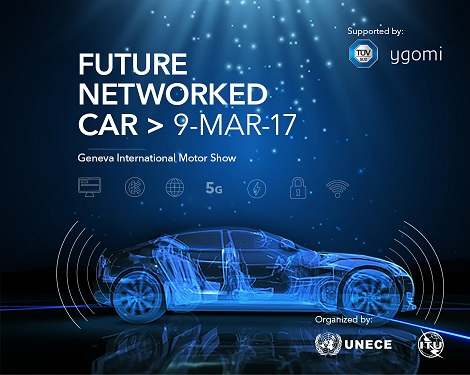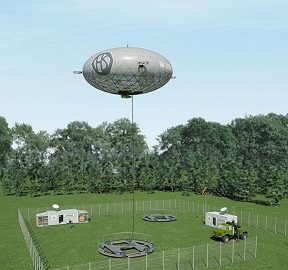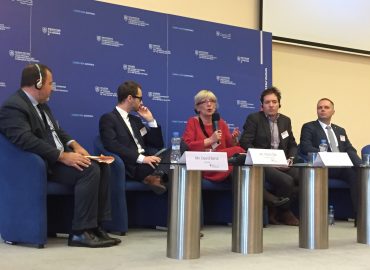On 9 March 2017, the International Telecommunication Union (ITU) and the United Nations Economic Commission for Europe (UNECE) convened the Symposium on The Future Networked Car within the 87thGeneva International Motor Show.
The international symposium brought together representatives of vehicle manufacturers, the automotive and ICT industries, researchers, governments and their regulators to discuss the status and future of connected vehicles and automated driving. The Future Networked Car Symposium examined advances in this area from the perspectives of business, technology and policy.
Technical sessions focused on the importance of 5G systems to automotive innovation; the relationship between vehicle communications and automated driving; cybersecurity and data protection; and the role to be played by artificial intelligence and machine learning in future transport systems. Participants also debated the modes of collaboration with the greatest potential to lead to the agreement of a cohesive set of technical standards for connected vehicles and ITS to meet industry needs and to achieve interoperability.
On 10 March, an open meeting of the Collaboration on ITS Communication Standards took place at the ITU headquarters to review the state of ITS communication standards and discuss the way ahead.
Key messages
Vehicle to everything (V2X) communication technologies are capable of quickly, securely and reliably exchanging information, and there are already several options. The early frontrunner in Europe is ETSI ITS G5, which operates in the 5GHz range, and is an adaptation of the widely-used IEEE 802.11 standard for Wi-Fi to incorporate Wireless Access in Vehicular Environments (WAVE). The initial standard sets specify V2X communication and enable applications primarily for driver information and warnings. ITS G5 is the internationally-recognised standard which does not require licensed spectrum. No network architecture is needed to provide peer-to-peer communications between vehicles and road infrastructure, meaning that it could be deployed on any road, and even in rural areas where there is limited telecoms infrastructure.
The other option, 5G – the fifth generation of mobile networks and an evolution of 4G LTE, is considered the logical technology on which to base the V2X networks, with short and long range, high speed, low latency, enhanced security and sufficient capacity for millions of cars to interact at the same time. Currently 5G is under definition and standardisation is expected in 2018/2019. While waiting for the commercial availability of 5G networks, many of the benefits of V2X can be delivered now by complementing G5 with the key features of LTE. The EU’s goal for 2025 is for all urban areas as well as major roads and railways in Europe to have uninterrupted 5G coverage, as foreseen in the 5G Action Plan.



